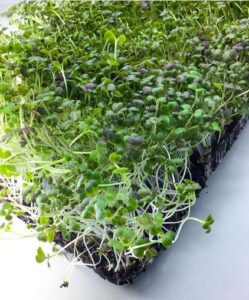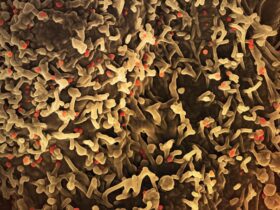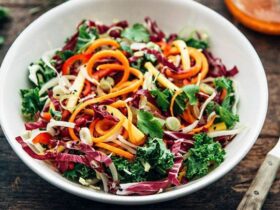Nutrition nowadays has more of a disease risk-reduction ability, focusing on a healthier lifestyle. What we choose to eat should be great for our heart, brain, and immune system. We no longer eat cautiously, only to stay fit but to protect our bodies from various diseases.
Health-conscious people have included microgreens in their diet for a while now, mainly because of their potential to fill in the nutrition gap and its disease risk-lowering ability. These microgreens are more than meets the eye, some little miracles of nature you might really want to try.
Here is what you need to know.
Microgreens 101: Facts You Should Know
As you probably know, a seed’s journey is quite the ride. It must go through different growth phases before it fully turns into a mature plant.Â
One of that phases is the “microgreens” phase, which you’ll not ignore anymore after understanding its role.
The microgreens “level” of a plant is when the seed turns into a tiny plant that is bigger than sprouts but a bit smaller than baby greens. How cool is that?
Microgreens first came into the spotlight in the 1980s, when a US restaurant decided to promote them. They weren’t only a cute, little veggie on a plate but also an excellent source of minerals and vitamins.
Nowadays, microgreens are quite the deal, and people are more conscious about their benefits.
Microgreens Benefits

According to specialists, microgreens are usually harvested 7 to 14 days after germination, and even if they’re little, their benefits are enormous.Â
Microgreens are full of vitamins (A, B, C, E, and K), minerals, antioxidants, phytonutrients, and health-promoting nutrients our bodies really need. The best part is that this superfood is also linked to a reduced risk of many diseases, including:
- Diabetes:Â antioxidants help to lower a type of stress that can prevent sugar from entering cells;
- Heart disease:Â microgreens are a great source of polyphenols, some antioxidants that can lower the risk of heart disease;
- Alzheimer’s disease:Â thanks to the antioxidants (again) and the high amounts of polyphenols, the risk of Alzheimer’s disease may be lower.
What Types of Microgreens Can You Eat
The best varieties are produced using these plant families:
- Cucurbitaceae:Â cucumber, squash, and melon;
- Asteraceae:Â chicory, radicchio, lettuce, and endive;
- Amaranthaceae:Â quinoa swiss chard, spinach, beet, and amaranth;
- Apiaceae:Â carrot, celery, dill, and fennel;
- Amaryllidaceae:Â onion, leek, and garlic.
Microgreens in Your Diet

The first rule of microgreens: never cook them! You have to eat them raw because they’re so delicate and tiny, and if you cook them, they lose their nutrition and vitality.Â
Just toss some microgreens in your favourite salad, or add them to your everyday recipes, including sandwiches.Â












Leave a Reply